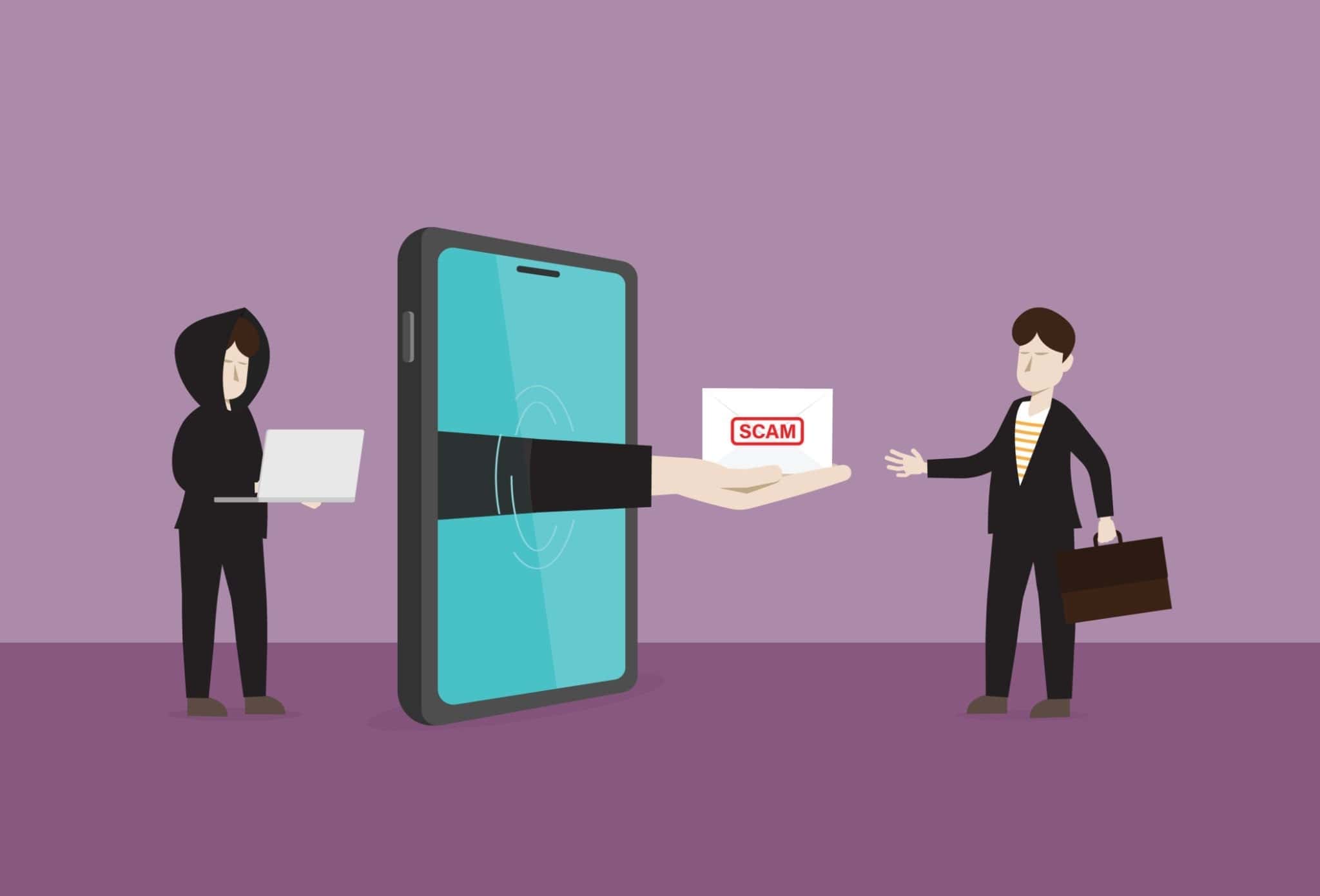Messaging scams are quite a common thing in this digital era. Out of every three Americans, one has fallen prey to messaging scams. These scams majorly happen in two forms: smishing and spoofing.
Smishing is when a scammer sends you malicious text messages to steal sensitive information like passwords, credit card details, and Social Security numbers.
In spoofing, a scammer contacts you while posing as a legitimate company or impersonating a familiar personality and influences you to do as they ask.
The consequences of messaging scams can be dire and long-term. Loss of money, identity theft, and malware are at the top of the list. Therefore, you must quickly identify signs of a messaging scam and avoid getting baited.
Here’s how you identify a scammer and what you should do:

1. Grammatical Mistakes
Fortunately or unfortunately, scammers have lots of typos and grammatical errors in their messages. This is perhaps because English is not their first language, or it can be because:
- Intentional errors make a message seem realistic and believable
- Scammers weed out targets who are alert to scams and are less likely to be deceived
- Scammers are not professional and don’t care much about their target
- Scammers may use automated tools to send massive messages
On the other hand, legitimate companies have professionals who intend to make communication a lot smoother and are keen on their grammar. Therefore, don’t be quick to text back the next time you see a poorly written text message.
2. Irrelevant or Misplaced Messages
If you get a message from a new number addressing you about something you know nothing about, it is probably a scam.
For example, “Dear esteemed customer, you have won…” is a red flag if you have never participated in any lotteries or contests.
In rare scenarios, such messages may be sent wrongfully; then you just need to ignore them. You should also opt out of any subscriptions that send you spam texts.
However, if you’re unsure about who is sending you messages, use Nuwber to see who it might be, and only respond when you are sure that the prize is real.
3. Vague Information
“You have won a prize. Please reply to this message to claim it.” In this case, the information about the prize and the reason for winning it is vague. Scammers use this tactic because their activities are malicious.
Also, scammers may send you such vague information to pique your interest and excite you, prompting you to act. Who doesn’t want to win a prize?
4. Asking for Personal Information
Whenever you receive a message that prompts you to give out your passwords, Social Security number, or credit card details, watch out!
In response to the increasing rates of scams, companies have been forced to find alternative ways to reach out to their customers if they need such important details. For example, when logging into your bank account app, you only have to enter your password on the app, not via a text message.
5. Threats and Urgency
Scammers use threats and urgency in messages to instill fear and make you act quickly without verifying the message. For example, you get a text from someone claiming to be an IRS representative threatening to take legal action unless you send them money immediately through a wire transfer.
If you identify signs of threats and urgency, it is most likely not from a legitimate company, which makes it very likely to be a scam.
If this happens, do not text back; call or send a text message to the IRS at 202-552-1226.
6. Different Tone and Format
Each firm has its unique way of communicating with its customers. Therefore, over time, you may get used to the format of communication you receive from certain companies.
It is then obvious that you should be cautious if you receive a message claiming to be from the same company written in a different manner. Also, if a message doesn’t follow the standard professional messaging style, it is likely a scam.
In this case, contact the company to confirm if they sent you the message. If not, don’t reply. Just delete the message and block the number.
7. Phony Links
Scammers often spoof companies’ identities and send messages with suspicious links. These links take you to fake websites where your personal information can be stolen or you can unknowingly download malware. Here’s how to identify a suspicious link:
- The URL doesn’t contain the company’s domain name
- The links are shortened to hide the true landing page of the URL
- The domain name has spelling mistakes; for example, Amarzon instead of Amazon
8. Forged Details
Fraudsters try to have phone numbers similar to legit organizations’ official contacts. However, if you are aware, you will notice the difference. For example, companies choose numbers that are short and easily memorable.
Companies also use alphanumeric sender IDs to send personalized messages. On the other hand, fraudsters’ numbers may be difficult to memorize and strangely have more digits.
Most Common Messaging Scams

Messaging scams date as far back as the internet boom, and here are some of the most common ones that you should be aware of:
- Urgent requests for money to help a family member in need
- “You have a package delivery. Follow this link” messages. You are then prompted to pay in advance to receive the package
- Giving out your account details to receive a refund
- Randomly receiving messages about claiming cryptocurrency
- “Your bank account is getting closed, so you need to pay” messages
- “Mom/dad, I’m in jail” messages. You’re told to bail out your son/daughter from prison
- “Your job application was successful, and you need to pay to start working” messages
- “Your phone/computer has a virus, and you need to click the link to download an antivirus” messages.
If you encounter such scams, never click on any links provided in messages and don’t open any attachments. All you need to do is block the number.
Conclusion
Messaging scams come in different forms. In all of them, there are red flags that you can notice. You should know how to prevent your personal information from being stolen and used to somebody else’s advantage.
The most obvious red flags are anonymity and asking for bank account details and money.
Always confirm a person’s identity before engaging with them. Most importantly, if you receive a malicious message, don’t text back. Delete it, block the number, and report it.
Related Posts:
- How to Know if a Shopping Website is Legit or Fake?
- Bitcoin wallet scam: Never ask someone to create a BITCOIN wallet
- Beware of these 8 cryptocurrency scams
- How Govt. approved NGOs are scamming people
- Can you double Bitcoin in 24 hours?
